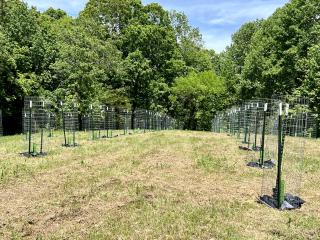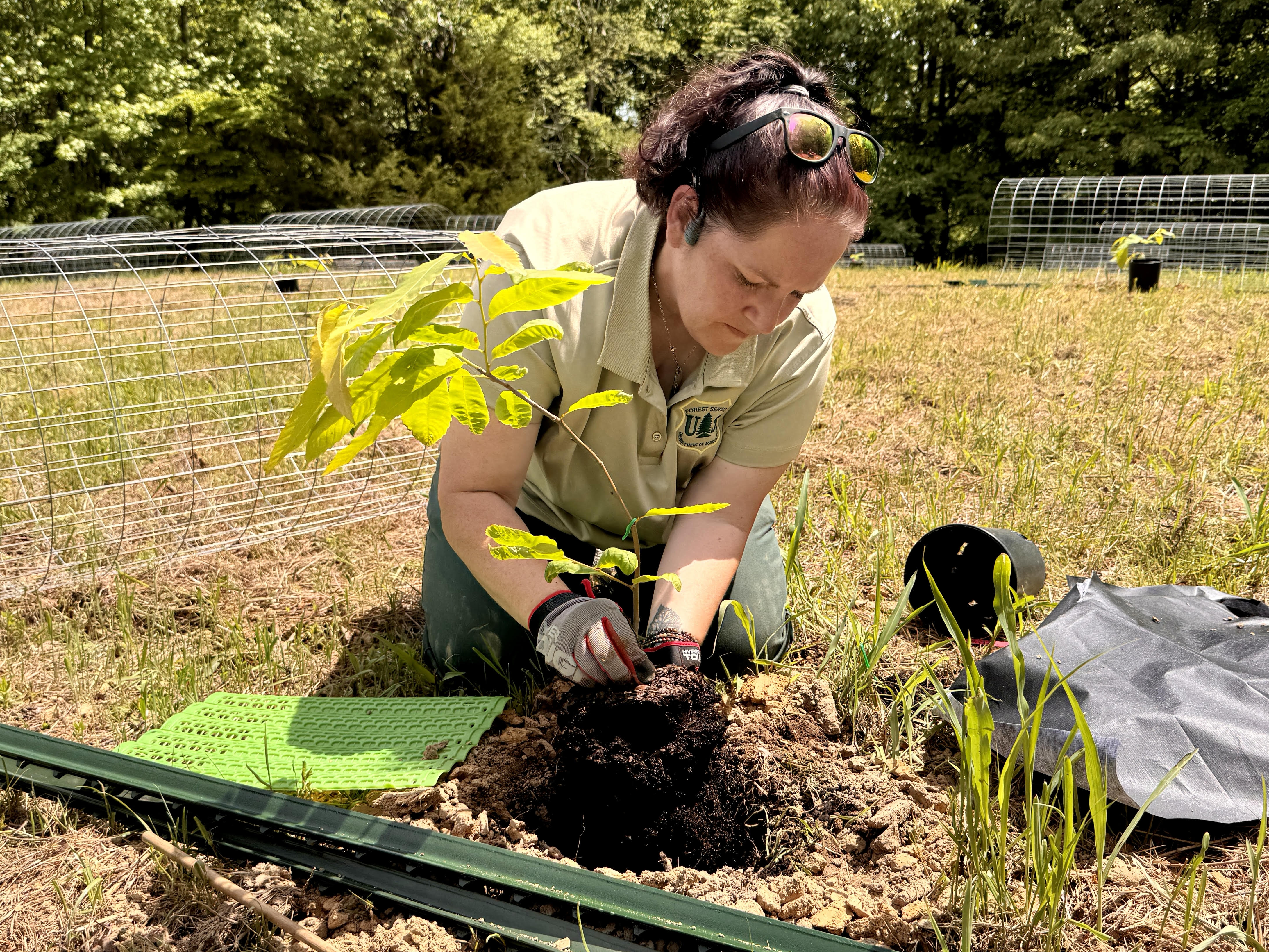Restoring the iconic American chestnut

KENTUCKY—American chestnut once spanned more than 200 million acres from Maine to Georgia and as far west as the Mississippi River. Exotic pests from Asia, notably the chestnut blight, decimated it about 100 years ago. Today, The American Chestnut Foundation is working to return this tree to its former glory.
One of their significant goals is to find a genetic variant of the American chestnut that can survive the chestnut blight. To accomplish that, the foundation recently partnered with the USDA Forest Service to plant 64 seedlings in Land Between the Lakes National Recreation Area with the goal of creating a strain of American chestnut that is unique.
“This project seeks to preserve that unique DNA,” said Darnell, who also explained that Land Between the Lakes offered a unique opportunity for the project. American chestnuts in Land Between the Lakes are among the farthest western examples of the species, making their DNA different from other strains, even within Kentucky.
The foundation is interested in having as large a bank of chestnut DNA as possible to look for aspects that can be combined to produce that resistance. That interest has brought them to the Land Between the Lakes National Recreation Area in Kentucky.
“Wild chestnuts in the LBL forest are unique,” said Ken Darnell, president of The American Chestnut Foundation’s Kentucky Chapter. There are American chestnuts with DNA that the foundation does not have large amounts of, so they hope to be able to acquire that. The best way to accomplish that DNA acquisition, though, is to collect some actual nuts from the trees, and for that, one needs adult trees.
At the onset of the project, partners mapped existing chestnuts and took cuttings from existing American chestnut trees in Land Between the Lakes, which were transported to the Forest Service’s Southern Research Station nursery in Mississippi to be grafted with young sprouts of Chinese chestnuts.
The trees’ symbiotic relationship allows the American chestnut to grow as long and as quickly as possible, thanks to the Chinese chestnut’s resistance to root diseases. The aim is to keep the seedlings alive for at least five to seven years to provide full American nuts.

The grafted chestnut trees are expected to succumb to the blight in a few years, they don’t have additional levels of resistance against it. However, because grafted trees mature more quickly, the hope is that these trees will produce fertile nuts before potentially succumbing to blight.
Today, it’s extremely rare to find a mature American chestnut within its native range due to a fungus called the Asian chestnut blight. The blight infects tree trunks and kills everything above the infection point. However, the fungus is not able to survive underground to infect the root system, so the tree can resprout from its roots. Unfortunately, it is frequently then reinfected by spores of the blight, starting the process all over again.
In fact, since the trees are not pure American chestnut, the hybrid trees and roots will be dug up and burned as they die. Allowing the hybrids to grow would only increase the number of Chinese chestnuts and go against the goal of restoring full American chestnuts.
This cycle of death and rebirth has kept the American chestnut from being completely extinct, but keeps it at a state of functional extinction, as the American Chestnut Foundation puts it. One aspect of that functional extinction is that very few nuts are produced anymore, since it is rare for the resprouted chestnut trees to survive long enough to produce nuts.
The ecological and cultural importance of the American chestnut tree has made restoration efforts a priority for federal agencies, Tribes, states, non-profits, universities and private citizens. Together they have been working for decades to create a blight-resistant tree that will help to restore the once-great American chestnut population.
You can learn more about American chestnuts by watching this Forest Service video about the American chestnut. Additionally, The American Chestnut Foundation released a documentary about its work, titled Rescuing the American Chestnut.

